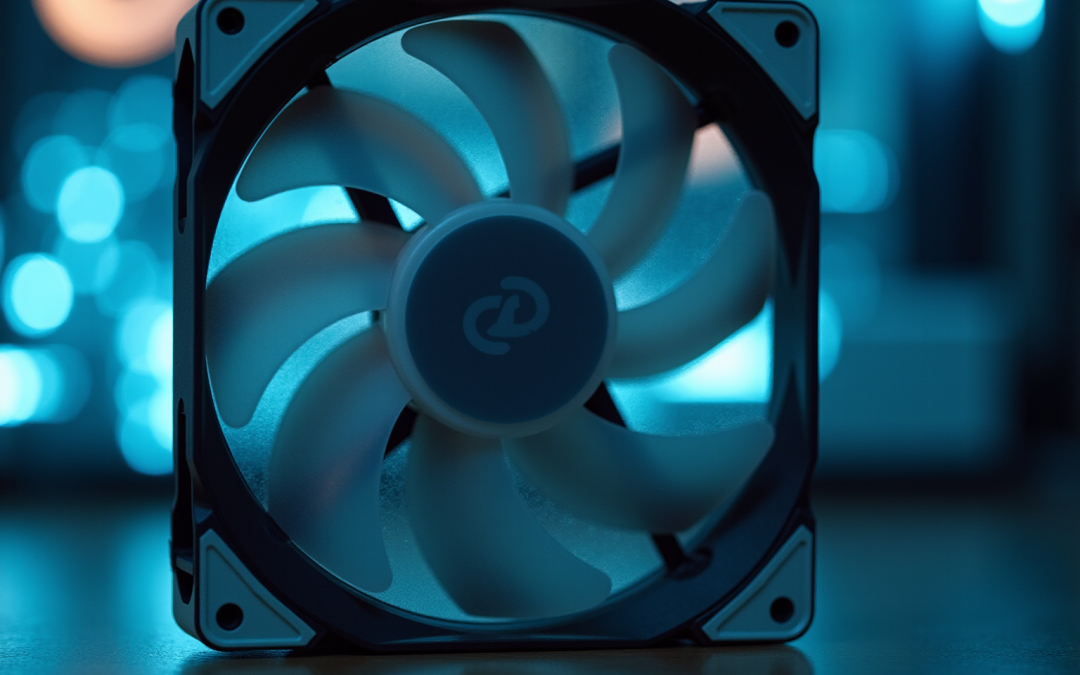Overview
Self-cooling fans are electromechanical devices specifically engineered to effectively dissipate heat produced by electronic components. This functionality is crucial for ensuring optimal operational efficiency through the precise regulation of airflow and temperature.
The article delineates their historical evolution, key characteristics, and significant applications within the electronics sector. It emphasizes the pivotal role these fans play in enhancing the durability and reliability of devices, particularly in high-performance environments, thereby underscoring their importance in modern technology.
Introduction
The intricate world of electronics is fundamentally dependent on efficient temperature management, where self-cooling fans play a pivotal role in protecting sensitive components from overheating. These innovative devices not only enhance the performance and longevity of electronic systems but also adeptly respond to the ever-evolving demands of modern technology.
As technological advancements continue to reshape the landscape, a critical question emerges: how have self-cooling fans evolved, and what key features define their effectiveness across various applications? This exploration delves into the definition, historical development, and essential characteristics of self-cooling fans, illuminating their indispensable role in today’s electronic environment.
Define Self Cooling Fan: Function and Mechanism
A self cooling fan is an electromechanical apparatus designed to effectively disperse heat generated by electrical components while maintaining optimal operational efficiency. These devices, integral to Gagner-Toomey Associates‘ extensive portfolio, leverage a sophisticated combination of airflow and to regulate temperature adeptly. The mechanism operates by drawing cooler air into the system and expelling warmer air, thus preventing overheating.
Self cooling fans are crucial in environments where space is limited, and effective temperature management is paramount—such as in computers, power supplies, and various electronic devices. Gagner-Toomey offers a diverse range of standard and custom air-movers engineered for performance, efficiency, and low noise. This ensures that these devices operate quietly while maximizing airflow and minimizing energy consumption.
Furthermore, their innovative designs and advanced materials significantly enhance thermal management capabilities, positioning Gagner-Toomey as a leading provider of self cooling fan solutions for electronics temperature regulation. By prioritizing both performance and user experience, they meet the demands of modern technology with excellence.
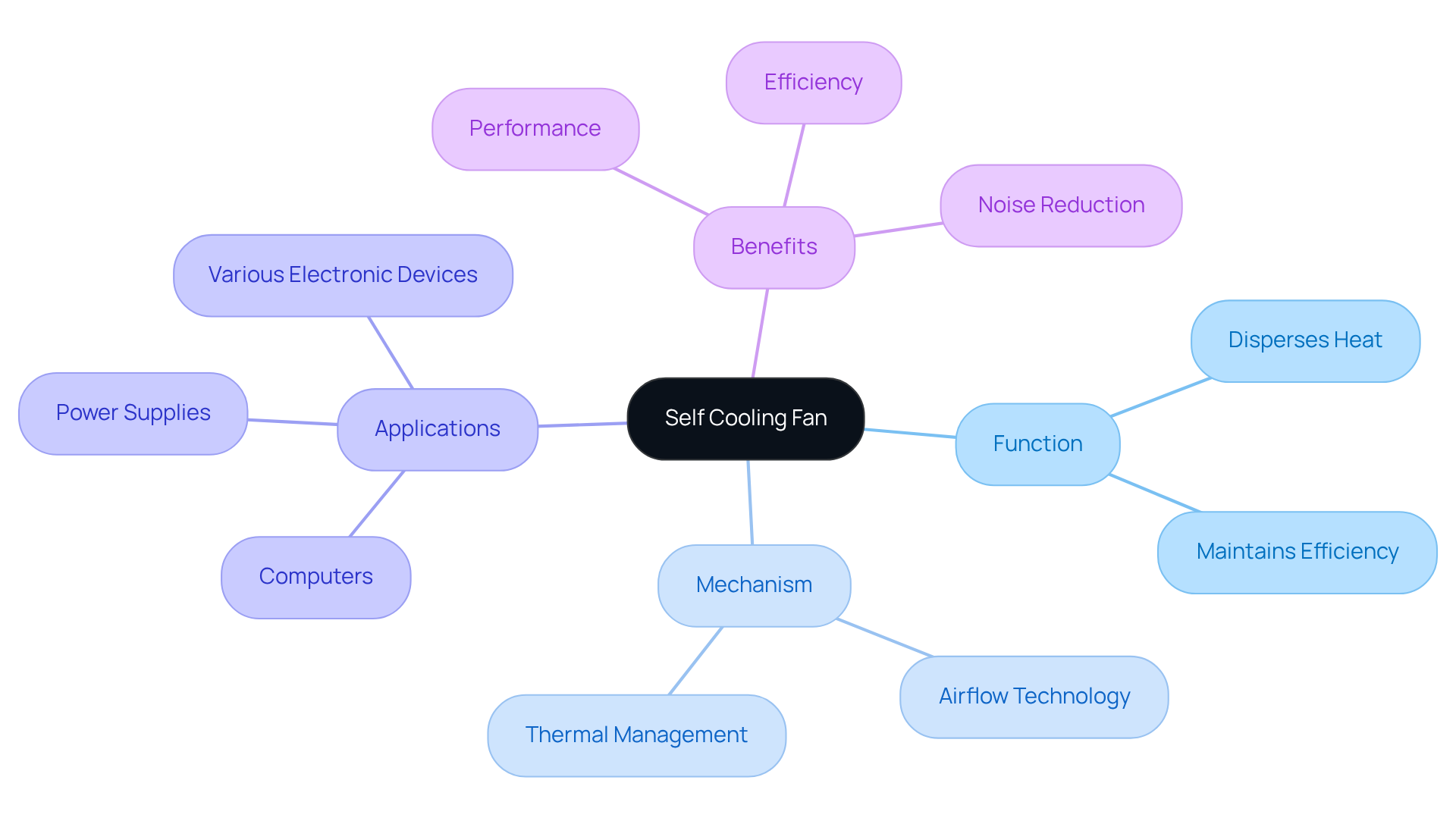
Contextualize Self Cooling Fans in Electronics: Importance and Applications
Self-regulating ventilators and self cooling fans are vital in the electronics sector, particularly in equipment that generates significant heat during operation. These devices find extensive applications in:
- Computers
- Servers
- Automotive electronics
- Telecommunications equipment
Their importance stems from their ability to of components by preventing thermal damage. In high-performance computing environments, for instance, automatic temperature-regulating devices are essential for maintaining optimal operating temperatures, thereby ensuring system stability and performance. As electronic devices continue to shrink in size while becoming more powerful, the demand for effective temperature regulation solutions, including self cooling fans, is on the rise, making them indispensable in modern technology.
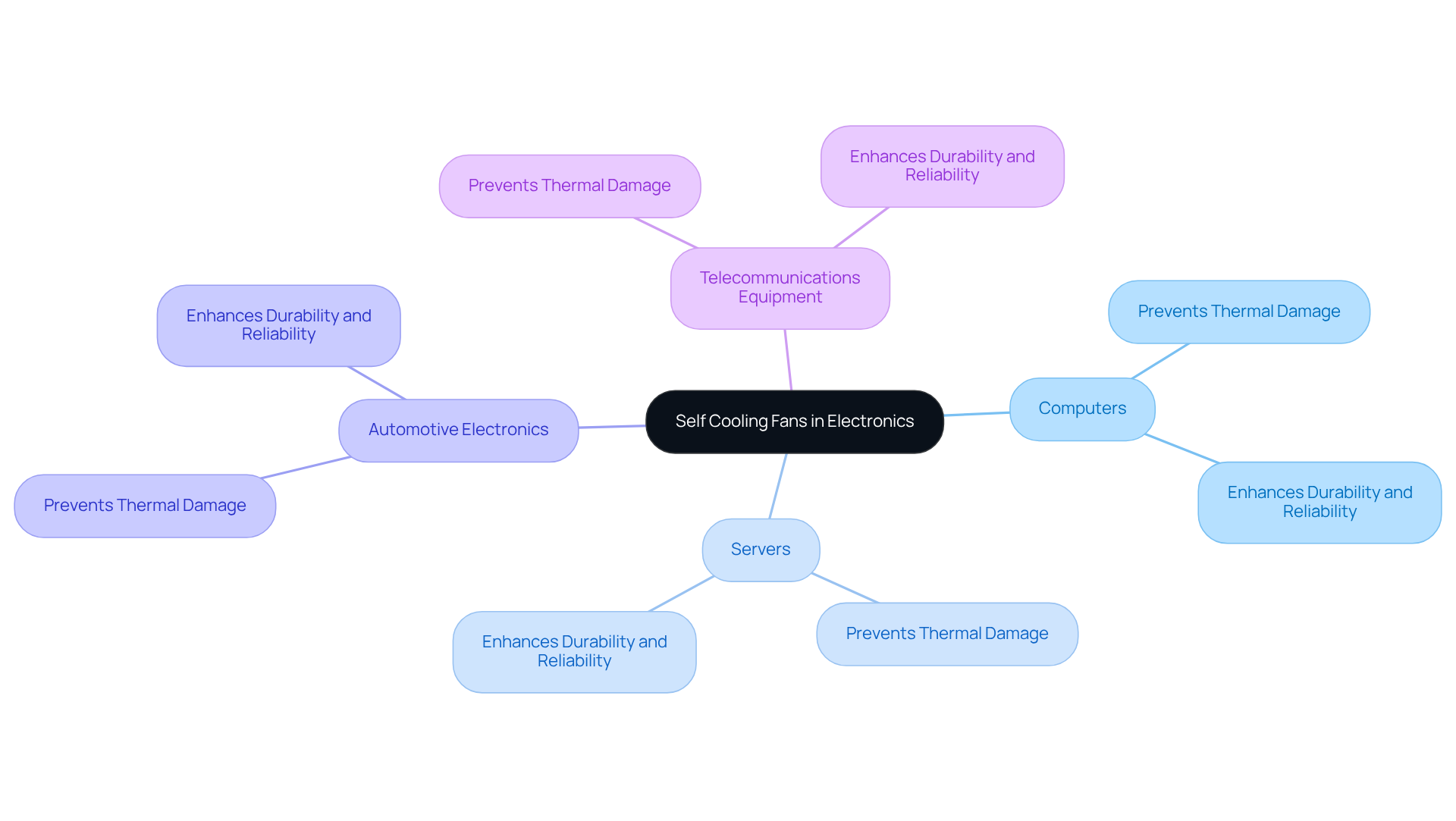
Trace the Evolution of Self Cooling Fans: Historical Development
The evolution of self-regulating devices, such as the self cooling fan, is rooted in the foundational era of electrical engineering, where rudimentary mechanical apparatuses were employed to mitigate the temperature of electrical components. The advent of electric motors in the late 19th century represented a pivotal moment, facilitating the development of more efficient and reliable temperature regulation solutions.
As the decades progressed, innovations in materials science and engineering ushered in a new wave of sophisticated designs for ventilation devices, encompassing both axial and centrifugal types. The surge of computer technology in the late 20th century further accelerated this innovation, as the necessity for compact and efficient temperature control solutions, including a self cooling fan, became paramount.
In the present day, autonomous ventilation devices seamlessly integrate intelligent technologies, enabling variable speed regulation and enhanced energy efficiency. This evolution illustrates the relentless advancement of , responding adeptly to the demands of contemporary electronics.
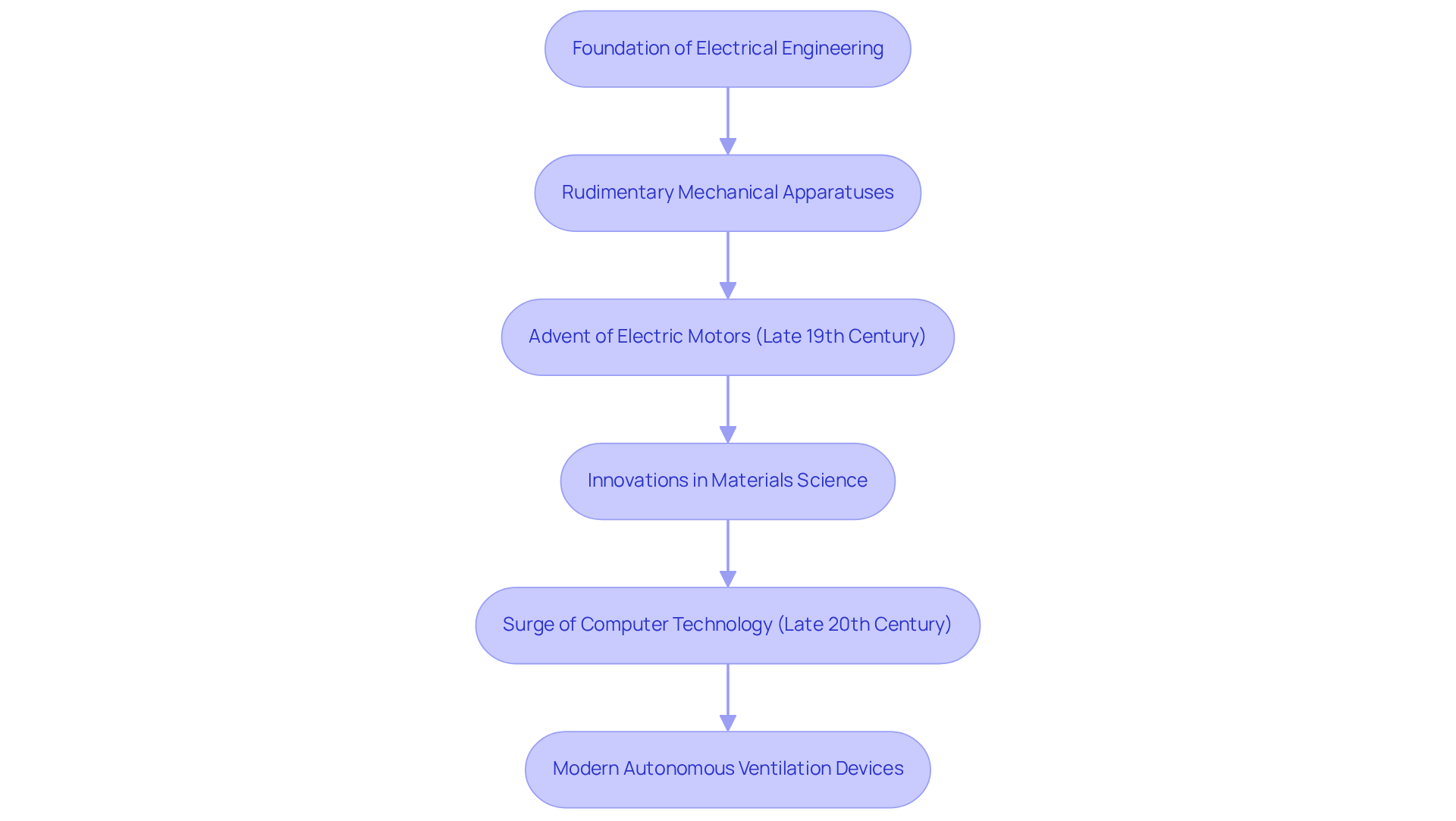
Examine Key Characteristics of Self Cooling Fans: Components and Design
Self-regulating blowers are defined by several essential elements that significantly enhance their performance. These elements include:
- Fan blades
- Motor
- Housing
- Control systems
The fan blades are meticulously designed to optimize airflow while minimizing noise, often utilizing aerodynamic shapes to enhance efficiency. The motor, typically a brushless DC motor, ensures , while the housing is engineered to direct airflow effectively. Furthermore, numerous autonomous ventilation devices incorporate built-in control systems that facilitate real-time observation and modification of speed based on temperature measurements. This adaptability not only enhances temperature regulation efficiency but also extends the lifespan of the fan itself. Overall, the design and components of a self cooling fan are critical to its performance across various electronic applications.
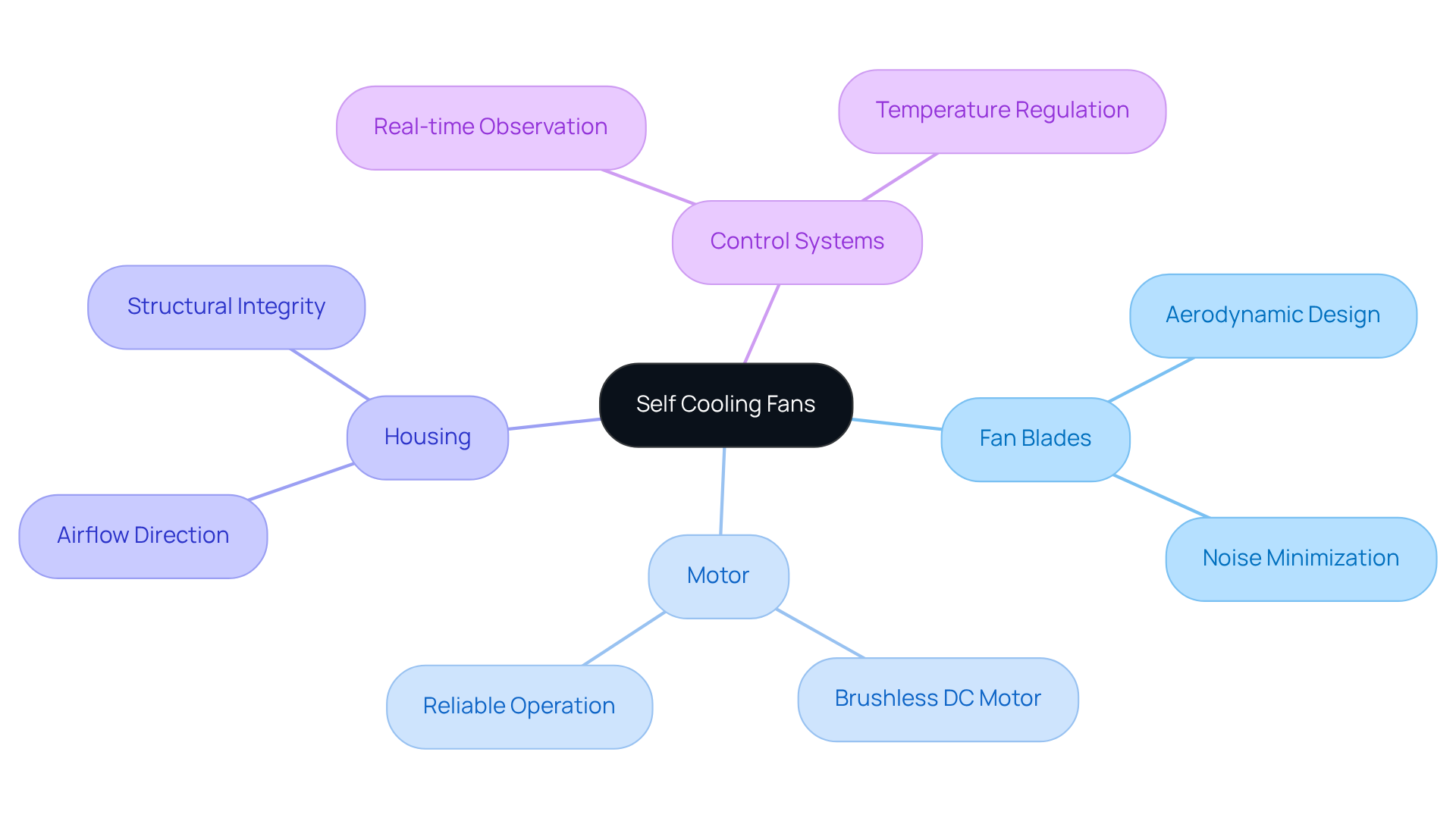
Conclusion
Self cooling fans are indispensable devices that play a vital role in maintaining optimal temperatures within various electronic systems. Their ability to efficiently manage heat not only enhances the performance of electronic components but also ensures their longevity, making them a crucial element in modern technology.
The significance of self cooling fans is profound, encompassing their basic function of heat dispersion and their historical evolution alongside advancements in electrical engineering. Key features, such as innovative blade designs, efficient motors, and adaptive control systems, illustrate how these elements synergize to provide effective thermal management in compact environments like computers and automotive electronics.
As technology continues to advance, the demand for effective cooling solutions will only grow. Understanding the evolution and mechanics of self cooling fans underscores their importance in ensuring the reliability and performance of electronic devices. Embracing these advancements is essential for anyone involved in technology—whether in design, manufacturing, or usage—as the future of electronics increasingly relies on effective thermal regulation.
Frequently Asked Questions
What is a self cooling fan?
A self cooling fan is an electromechanical device designed to disperse heat generated by electrical components while maintaining optimal operational efficiency.
How does a self cooling fan work?
It operates by drawing cooler air into the system and expelling warmer air, effectively regulating temperature and preventing overheating.
Where are self cooling fans typically used?
Self cooling fans are crucial in environments with limited space where effective temperature management is essential, such as in computers, power supplies, and various electronic devices.
What types of self cooling fans does Gagner-Toomey Associates offer?
Gagner-Toomey offers a diverse range of standard and custom air-movers designed for performance, efficiency, and low noise.
What are the benefits of Gagner-Toomey’s self cooling fans?
Their fans maximize airflow, minimize energy consumption, operate quietly, and utilize innovative designs and advanced materials to enhance thermal management capabilities.
Why are self cooling fans important in modern technology?
They meet the demands of modern technology by providing effective temperature regulation, which is essential for the performance and longevity of electronic devices.

